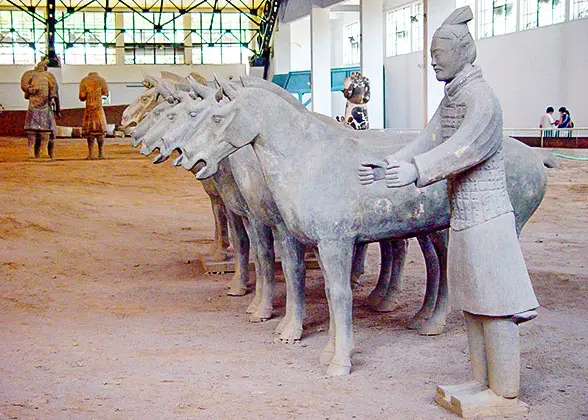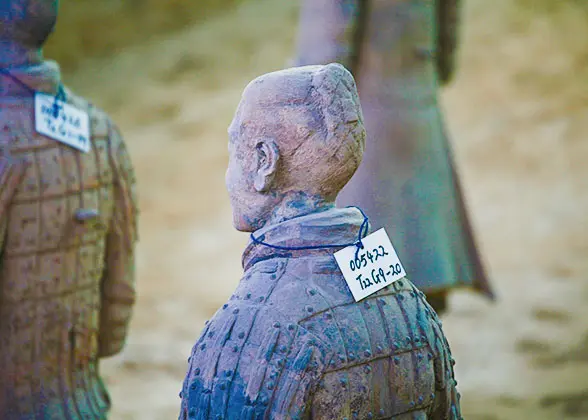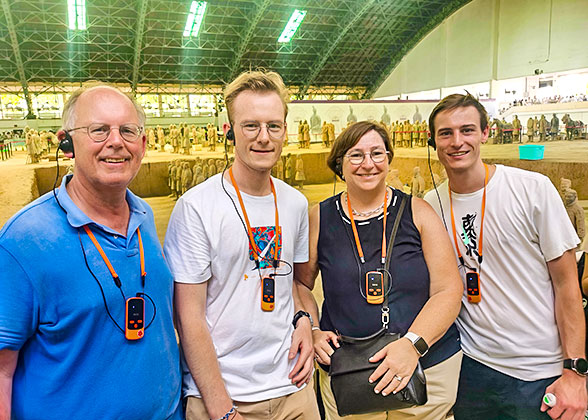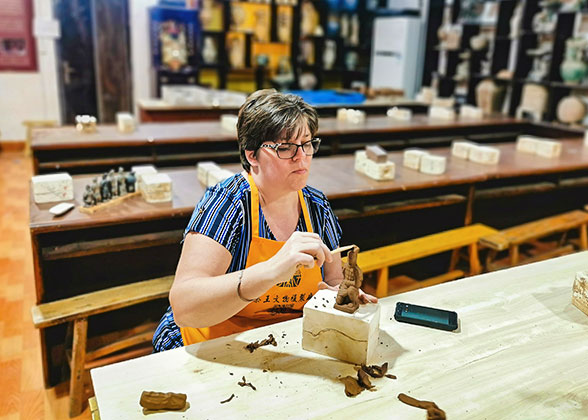Terracotta Warriors Pit 1, closest to the entrance, is the largest pit in the Terracotta Warriors Museum, containing the most terracotta warriors and horses. It covers an area of 14,260 square meters (3.5 acres), approximately equal to two football fields. The pit displays nearly 2,000 life-sized terracotta warriors, featuring a diverse array of military figures - infantry, cavalry, chariot soldiers, and archers - alongside their equine counterparts and 20 meticulously reconstructed wooden chariots. These numbers reflect only the unearthed and displayed cultural relics. It is estimated that over 6,000 terracotta warriors and horses, and more than 50 chariots are buried in Pit 1, arranged in a rectangular battle formation that faithfully recreates the grandeur of the Qin army.
Pit 1: The First-Discovered Terracotta Army Site
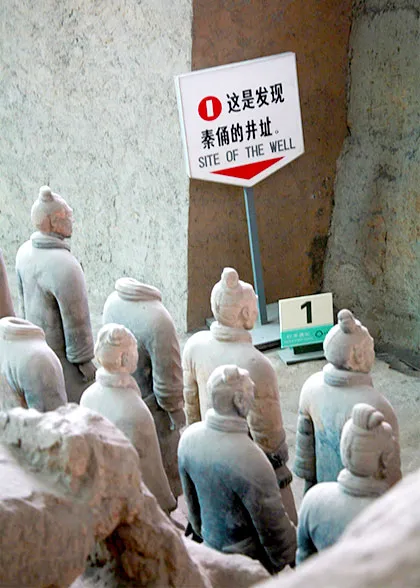 |
| The Original Well-drilling Site |
In March 1974, Yang Zhifa and fellow villagers from Lintong District, Xi'an, unexpectedly discovered fragments of terracotta warriors and bronze weapons while digging a well, marking the first discovery of terracotta warriors and horses after more than two millennia of underground concealment. The site of their discovery corresponds to the current location of Pit 1. After meticulous excavation, a large arched hall spanning 16,000 square meters (3.95 acres) was built above the pit in 1976 to preserve these relics. On October 1st, 1979, the pit was opened to the public. Today, visitors can still see the original well-drilling site where the terracotta warriors were discovered in the southeastern corner of Pit 1 of the Terracotta Army.
 Read more: Who found the Terracotta Warriors?
Read more: Who found the Terracotta Warriors?
What to See Inside the Terracotta Warriors Pit 1?
Terracotta Warriors and Horses
Stepping into Pit 1, visitors will be immediately struck by its vast scale. Within the 14,260-square-meter (3.5-acre) formation, thousands of terracotta warriors and horses stand in orderly rows, exuding an awe-inspiring presence. These life-sized warriors range from 1.72 meters (5.64 feet) to over 2 meters (6.56 feet) tall, averaging around 1.8 meters (5.91 feet). Each warrior has a unique face shape, hairstyle, and facial expression. Even individual strands of hair, rivets of armor, and belt hooks around waists are meticulously crafted. Their poses also vary: some clench fists in readiness, while others appear deep in thought, as if the silent army could come to life at any command. The terracotta horses are equally lifelike, matching real horses in size, with well-developed muscles and slightly raised heads. Their mouths even contain 6 to 8 teeth, which reflects that these horses are at their prime age. Originally painted in vibrant colors, the warriors and horses have faded to mostly gray due to over 2,000 years of burial and the flaking of pigments after excavation.
Pit 1 is arranged in a well-organized battle array of the Qin dynasty, consisting of vanguard, main force, flanks, and rear guard.
1. Vanguard: At the front of Pit 1, there are three rows of light infantry, each row containing 68 warriors, totaling 204. These warriors, armed with crossbows, form the leading units moving at the head of an army.
2. Main Force: Behind the vanguard lies the core of the army: 38 columns of chariots and infantry arranged in alternating rows. Most warriors in this section are armed with spears, halberds, or bows.
3. Flank Guard: On both sides of the formation, there is a single column of infantry facing outward, serving as defensive wings to prevent enemy attacks from the sides.
4.
Rear Guard: On the western end, there are three rows of rear guards against rear assaults, with two lines facing east and another facing west.
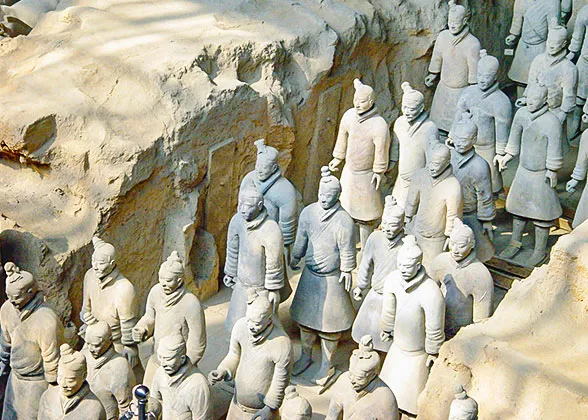 | | Main Force | | 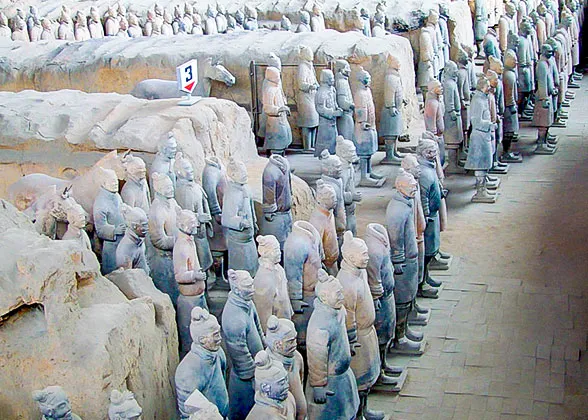 | | Rear Guard | |
Weapons
During the excavation, archaeologists discovered not only the terracotta warriors and horses but also a variety of well-preserved weapons designed for actual combat, including bronze swords, spears, crossbows, arrows, and billhooks. Among these, the Qin crossbow stands out as the King of Cold Weapons. These bronze weapons, unearthed without rust and some even retaining their sharp edges and original luster, demonstrate the Qin dynasty's advanced metallurgical technology, with certain blades remaining exceptionally sharp today.
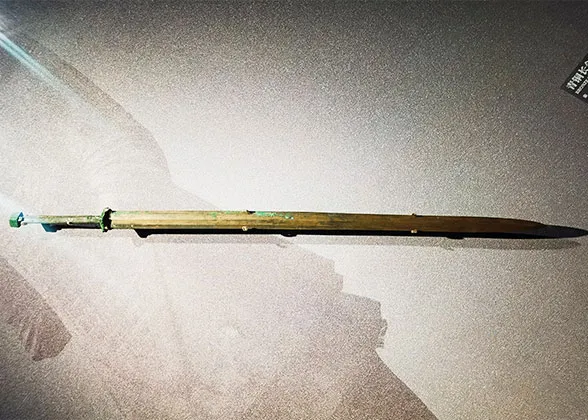 | | Well-preserved Bronze Sword | | 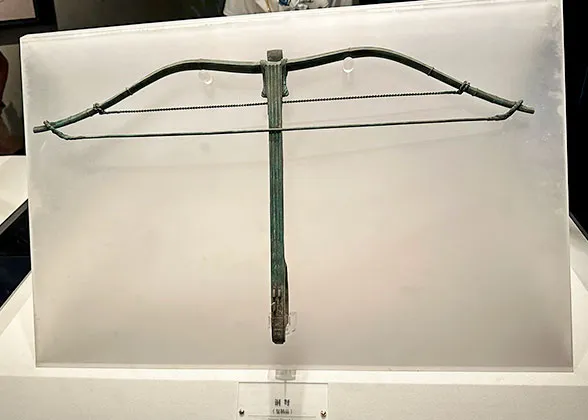 | | Bronze Crossbow Unearthed from Pit 1 | |
What Does the Terracotta Warriors Pit 1 Look Like?
As the largest pit of the underground
Terracotta Army, Pit 1 is an east-west rectangular pit, measuring approximately 230 meters (754.6 feet) long, 62 meters (203.4 feet) wide, and 4.5 to 6.5 meters (14.7 to 21.3 feet) deep. There are five sloping entrances on both the eastern and western sides. Two side doors are located on the northern and southern sides. About every three meters (3.3 yards), there is a partition wall that separates the underground army into different columns. The walls were reinforced with wooden columns, earth, and reeds, while the floor was covered with caesious bricks. Some bricks are orange, decorated, and engraved with string patterns and a few characters. The archeological excavations found burned traces of black charcoal in Pit 1. Some experts speculate that Xiang Yu, overlord in the Western Chu Period (206 - 202 BC), set fire to the pit, causing it to collapse and destroying many terracotta warriors and horses.
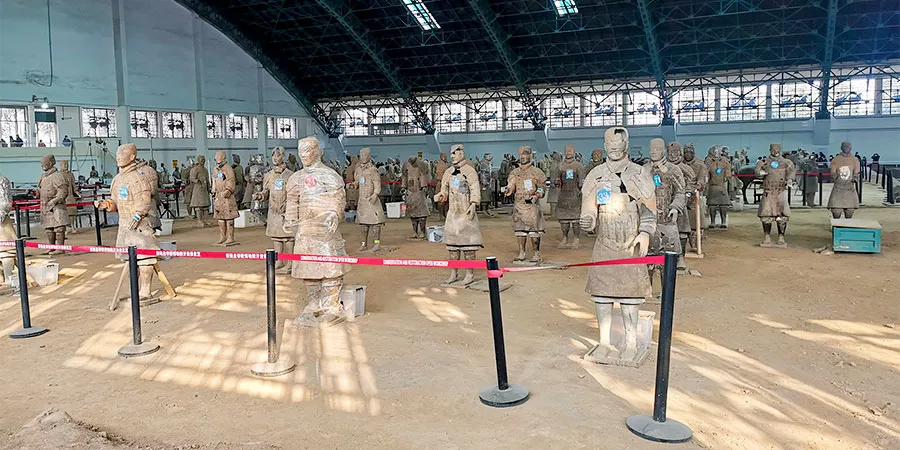 |
| Terracotta Warriors Restoration Area |

Read more:
Tips for Visiting Terracotta Warriors Pit 1
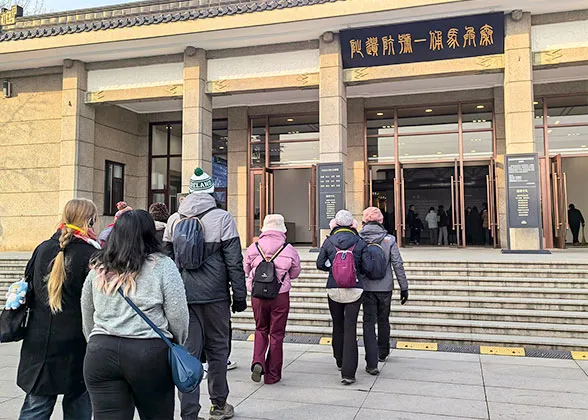 |
| East Main Gate of Pit 1 |
1.
From the ticket checkpoint, walk south for about 500 meters (550 yards), then turn right to walk another 500 meters (550 yards) to reach the east main gate of Pit 1.
2. Pit 1 has five entrances, with the east main gate offering a full front view of the entire pit, where the ideal spot for panoramic photos is located. As you move farther south, more details of the terracotta warriors and horses can be seen.
3. Please do not climb over railings or touch the terracotta warriors and horses to protect your safety and the cultural relics.
4. Keep personal belongings secure to avoid dropping them into the pit.
5. Be mindful of steps to prevent tripping and wear comfortable shoes for long-distance walking.

Read more:
 Next: Terracotta Warriors Pit 2
Next: Terracotta Warriors Pit 2
- Last updated on Aug. 04, 2025 by Alex Jin -
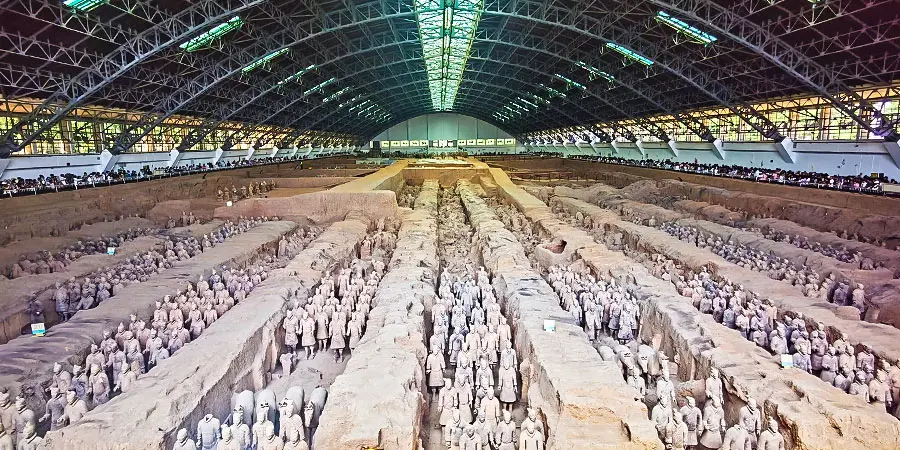

![]() Read more: Who found the Terracotta Warriors?
Read more: Who found the Terracotta Warriors?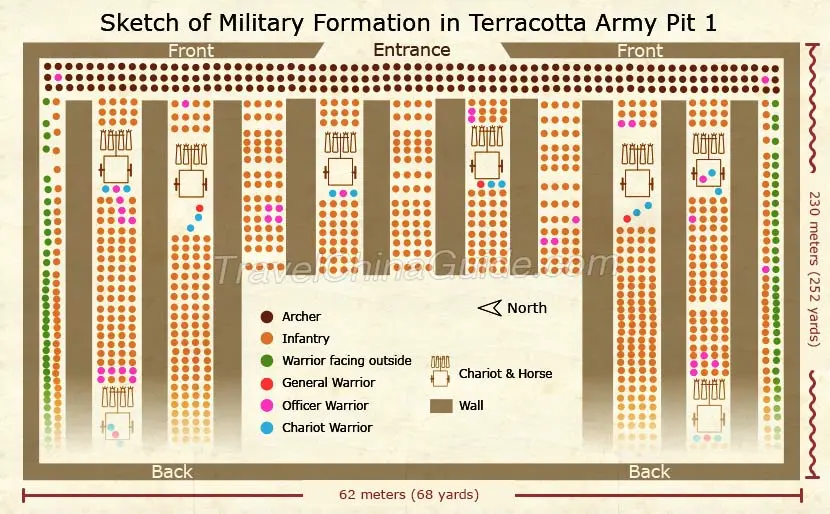


![]() Next: Terracotta Warriors Pit 2
Next: Terracotta Warriors Pit 2
